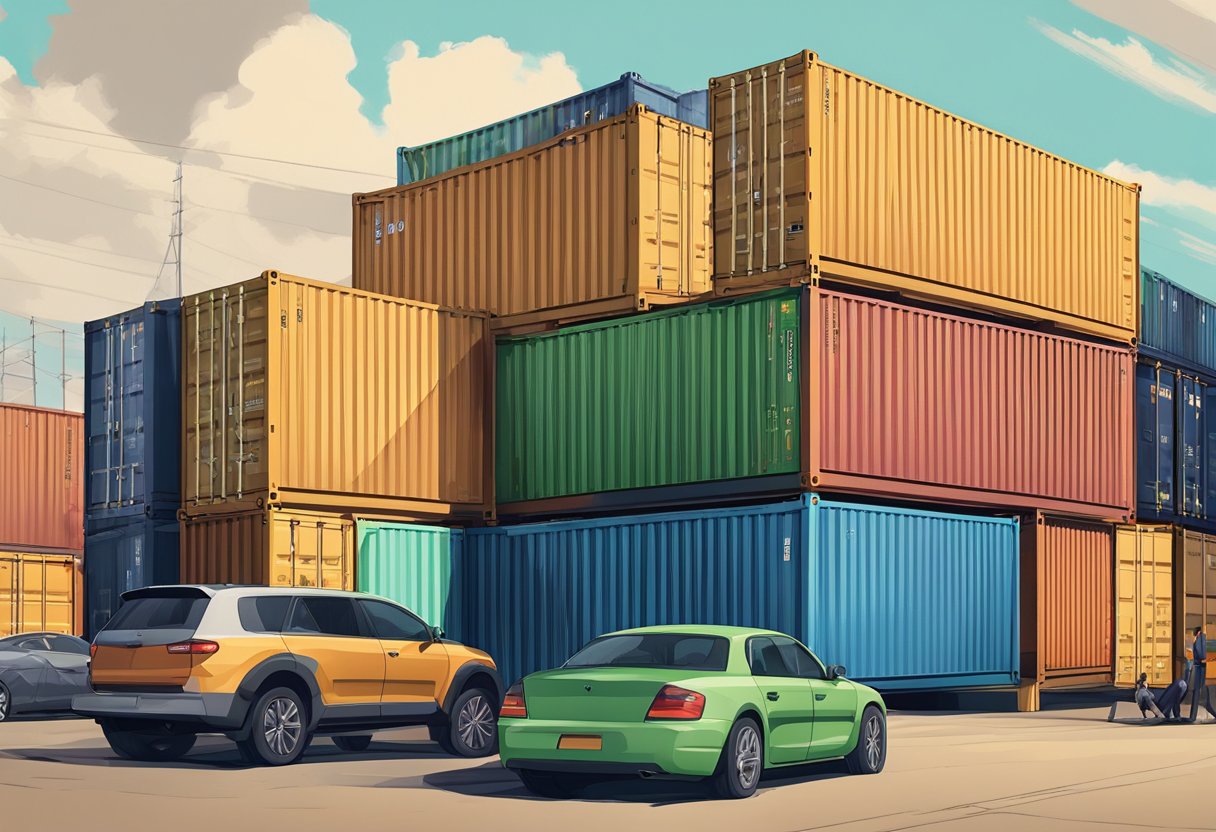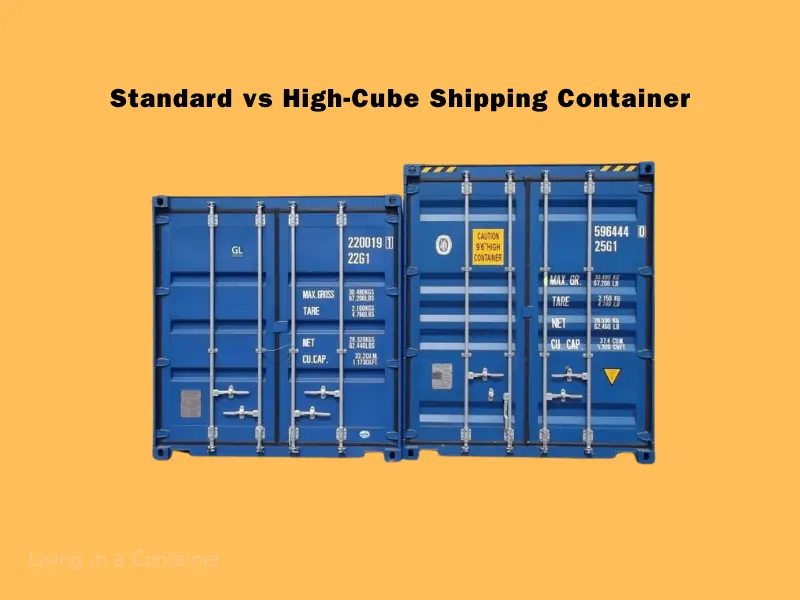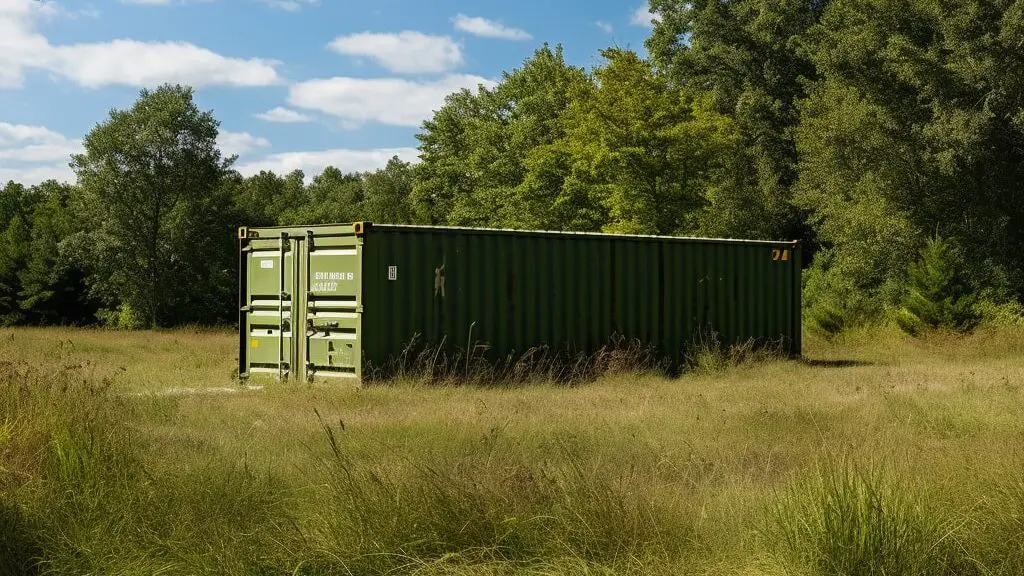Shipping containers have become indispensable in global trade, offering standardized dimensions that facilitate the efficient transport of goods across the world.
There are essentially two height variations that are commonly used in the shipping industry: the standard containers and the high cube containers.
Standard containers typically have a height of 8 feet 6 inches, providing ample space for most cargo needs. For loads that require additional vertical space, high cube containers offer an enhanced height of 9 feet 6 inches.
These variations ensure that different cargo types can be accommodated with ease, making shipping containers a versatile option for transport.

Understanding the exact dimensions of shipping containers is crucial, especially when considering the logistics of transport or the innovative use of containers in construction and storage.
The height of standard and high cube shipping containers affects not just the volume of goods that can be carried but also influences the handling and transport methods used.
For those looking to purchase or utilize these containers, recognizing the importance of container dimensions can lead to more informed decisions and optimized use of space.
Container Specifications

When considering shipping containers, various specifications such as dimensions, capacity, and tare weight play crucial roles in determining which container is appropriate for a specific type of cargo. Two common categories in this respect are standard containers and high cube containers, each designed for particular storage and transportation needs.
Standard Dimensions
Standard shipping containers, primarily used for dry cargo, come in different sizes: 20ft, 40ft, and 45ft.
The most widely recognized model, the 20ft shipping container, typically measures 20 feet in length, 8 feet in width, and 8 feet 6 inches in height on the inside. These containers have an internal capacity of approximately 33 cubic meters, which equates to a maximum cargo load that varies depending on the material being transported. For instance, a 20ft container has a tare weight of around 2,300 kilograms, and a gross maximum of about 28,000 kilograms.
- Internal Length: 19’ 4” | 5.89m
- Internal Width: 7’ 8” | 2.35m
- Internal Height: 7’ 10” | 2.39m
- Tare Weight: ~2,300 kg
- Capacity: ~33 m³
The 40-foot container, another popular standard size, allows for greater volume and is preferred for bulkier goods.
- Internal Length: 39’ 5” | 12.01m
- Internal Width: 7’ 8” | 2.35m
- Internal Height: 7’ 10” | 2.39m
- Tare Weight: ~3,750 kg
- Capacity: ~67 m³
High Cube Features
High cube containers are designed to provide additional height for taller goods, thus slightly increasing the container’s overall volume.
With a maximum height of 9 feet 6 inches, high cube containers are ideal for lightweight, voluminous cargo or oversized items that require more vertical space.
A standard 40ft high cube container increases the internal height by one foot over the typical standard shipping container, offering an interior height of 8 feet 10 inches.
- Internal Height: 8’ 10” | 2.69m
- Tare Weight: ~3,900 kg
- Capacity: ~76 m³
Although the internal length and internal width remain the same as the standard 40ft container, the additional height significantly enhances its capacity, making high cube containers an efficient choice for certain types of shipments.
Container Utilization and Transportation

Effective utilization of shipping containers is critical for optimizing cargo transportation. This involves strategic packing, understanding capacity, and utilizing the appropriate types of containers for both storage and transportation needs.
Cargo Loading and Capacity
Cargo loading is a precise operation, where the goal is to make the most of the container’s cubic capacity. Standard ISO containers are designed to carry most types of cargo, while specialized pallet wide containers cater to oversize pallets, enhancing space utilization.
TEU (Twenty-foot Equivalent Unit) is the industry standard measurement, with one TEU representing the space available in a standard 20-foot long ISO container.
- Dry storage containers are commonly used for a variety of goods.
- Reefer containers, or refrigerated containers, are essential for temperature-sensitive loads.
- Open-top and flat-rack containers address the challenge of over-height cargo.
- Conex boxes, known for their corten steel construction and often a wooden floor, are durable for rough transportation.
Strategic loading not only involves filling containers to their maximum allowable weight but also distributing cargo weight evenly to maintain safety during transit.
Transport and Storage Solutions
Transporting cargo efficiently requires a blend of both sea containers for intercontinental journeys and storage containers for static needs. To meet the requirements of different goods, including light items and heavy machinery, the industry has developed various container types:
- Standard containers for general cargo.
- Special containers, such as reefers, for controlled temperatures.
- Pallet wide containers for transporting larger quantities of palletized goods without wasting space.
- Containers designed for oversized loads handling specific types of special cargo.
Containers such as ISO containers and reefers must meet ISO standards to ensure safety and efficiency in global trade. When containers are not in transit, they may be stacked in port facilities or repurposed as mobile offices or temporary storage, reflecting their versatility outside of shipping. The choice of container, whether for dry storage or specialized needs, determines the efficiency and cost-effectiveness of the transportation process.
